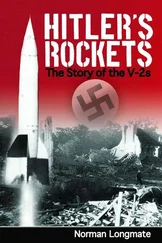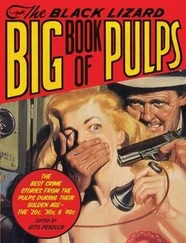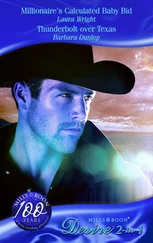Mike Mullane - Riding Rockets
Здесь есть возможность читать онлайн «Mike Mullane - Riding Rockets» весь текст электронной книги совершенно бесплатно (целиком полную версию без сокращений). В некоторых случаях можно слушать аудио, скачать через торрент в формате fb2 и присутствует краткое содержание. Жанр: Старинная литература, на английском языке. Описание произведения, (предисловие) а так же отзывы посетителей доступны на портале библиотеки ЛибКат.
- Название:Riding Rockets
- Автор:
- Жанр:
- Год:неизвестен
- ISBN:нет данных
- Рейтинг книги:3 / 5. Голосов: 2
-
Избранное:Добавить в избранное
- Отзывы:
-
Ваша оценка:
- 60
- 1
- 2
- 3
- 4
- 5
Riding Rockets: краткое содержание, описание и аннотация
Предлагаем к чтению аннотацию, описание, краткое содержание или предисловие (зависит от того, что написал сам автор книги «Riding Rockets»). Если вы не нашли необходимую информацию о книге — напишите в комментариях, мы постараемся отыскать её.
Riding Rockets — читать онлайн бесплатно полную книгу (весь текст) целиком
Ниже представлен текст книги, разбитый по страницам. Система сохранения места последней прочитанной страницы, позволяет с удобством читать онлайн бесплатно книгу «Riding Rockets», без необходимости каждый раз заново искать на чём Вы остановились. Поставьте закладку, и сможете в любой момент перейти на страницу, на которой закончили чтение.
Интервал:
Закладка:
Chapter 14
Adventures in Public Speaking
With the astronaut title came two duties few of us had ever performed in our past careers: giving public speeches and press interviews. While NASA didn’t force astronauts onto the speaking circuit, they did expect everybody to voluntarily take about a dozen trips a year to represent the agency at the head tables of America. The astronaut office received hundreds of requests a month for speakers, so there were plenty of events to pick from.
Like the majority of people, most astronauts fear public speaking more than death. As the joke goes, “Most people would rather be in the casket than delivering the eulogy.” I witnessed this hierarchy of terrors one dark and stormy night in the backseat of a T-38. My pilot was Blaine Hammond (class of 1984). After finishing a day of practice shuttle approaches at the White Sands shuttle runway, we were making a night takeoff from El Paso’s airport for our return to Houston. Our eastward departure was sending us into an ink black sky over a similarly darkened desert. Just as Blaine pulled the nose from the runway, I noticed a yellow flickering in the cockpit rearview mirrors and was about to comment on it when the El Paso tower interrupted. “Departing NASA jet, you’re on fire. There’s a flame trailing from your aircraft.” We were already airborne and well beyond our maximum abort speed. We had no choice but to continue our climb. I quickly informed Blaine of the flickering yellow in the mirrors. Clearly, our jet was burning behind us. Blaine yanked the engines out of afterburner (AB) and declared an emergency. El Paso tower immediately cleared us to land on any runway we could make. My thoughts were on ejection. The checklist was clear: In bold lettering it read, “Confirmed Fire—Eject.” You don’t get better confirmation than having the tower tell you you’re riding a meteor. I cinched my harness to the point of pain and placed my hands on the ejection handles and mentally reviewed the bailout procedures. As I was doing so, I continued to watch the engine instruments. The nozzle position on the left engine was the only off-nominal indication. At the power setting of the throttle the nozzle should have been more closed than what was indicated. There were no firelights and the fire-warning circuitry checked okay. I snatched my mask from my face and breathed the ambient air. There was no odor of smoke. The tower was telling us we were on fire, but there was no indication of it in the cockpit.
“Something’s wrong with the left engine. I’m going to keep it at idle and make a single-engine approach.” Blaine stated his intention and immediately banked the plane toward the nearest runway.
I challenged the decision. “That’s not what the checklist says we should be doing.” I didn’t have to say the word eject. Blaine knew the emergency procedures as well as I did.
“I know, but she’s flying fine.” I could tell in his voice Blaine was as frightened as I was about our predicament. The plane was flying fine and neither of us wanted to leave the security of his cockpit for the black outside. The thought of pulling those handles was absolutely terrifying. But, by staying with the plane, we were in clear violation of the emergency procedures.
I heard the tower wave off an airliner to give us every option for landing. We had the field to ourselves. I wondered if we would soon be putting on a fireworks display for a planeload of TWA passengers.
As the runway lights came into view, I followed Blaine through the landing checklist, including making a computation of our touchdown speed…nearly 180 knots. We were full of gas, making a high-speed, single-engine landing on a high-elevation runway. To complicate things a thunderstorm had just passed over the field. The runways were sodden. This could get ugly was my thought. Assuming we made the runway, there was an excellent chance we were going to blow some tires. To run off the runway would probably result in death. That assumed we made the runway at all, which was far from guaranteed. The fire had already damaged the engine nozzle positioning system, which put it in the vicinity of the tail-control surfaces. If those failed while we were deep into our landing attempt, we would probably die. The ejection seat wouldn’t be able to save us in an out-of-control situation close to the ground.
The annals of military aviation are filled with stories of aircrews that died doing exactly what we were about to do…ignore the “Fire—Eject” rule, play the heroes, and attempt an emergency landing. “Crewmember death occurred when ejection was attempted out of the ejection seat envelope.” I had read that conclusion in accident reports a hundred times in my career. I could imagine the comments of our peers at the next Monday meeting: “If they had followed the checklist, they would be alive today.”
Eject? Stay? Eject? Stay? The runway lights were looming and I was in the agony of indecision. Finally I decided that I would stay. I put the checklist aside and resumed my death grip on the ejection handles. If the master caution light illuminated or there was any other indication of ongoing fire damage, I was gone. It might be too late by then, but that was my decision.
Throughout this period, which had been less than two minutes, I could hear Blaine’s breathing through the intercom. He had the respiration of a marathoner. He was stressed to the max.
We touched down and within seconds the right-side tire blew and the aircraft started a drift to the right. In correcting our trajectory Blaine blew the left tire. We were riding on shredded tires but at least we were skidding straight down the runway. Fire engines followed us.
It was soon a story for the ready room. We came to a safe stop. The firemen used handheld extinguishers to spray the smoking wheels. Blaine and I climbed from the cockpit and immediately walked to the back of the plane. Sure enough, we had been on fire. There was a hole burned in the bottom of the fuselage near the left engine nozzle. Later we learned a piece of the afterburner plumbing had failed and had served as a blowtorch when the throttle had been in AB. The problem was far enough aft to be out of the range of our fire sensors, which explained the lack of any firelights. When Blaine had pulled the left throttle from afterburner, the fuel source for the fire had been isolated. It was the remaining fuel in the engine compartment that had been burning as we made our landing. We had ignored the checklist and lived to tell the tale.
As we were being driven back to the operations office, I was thinking of what a great job Blaine had done. It wasn’t the stuff of legends, but it was a fine testament to his piloting abilities. He had handled a serious threat with confidence and poise. But then, that was to be expected. He was an astronaut and test pilot and he had merely been dueling with death. A far greater menace was about to leap from the shadows.
The radio scanner at a local TV station had picked up the words “NASA jet on fire” and a reporter had been dispatched to the scene. As we walked into operations, we were blindsided by the lights of a camera. A microphone was shoved in our faces. There was to be film at ten and we were to be the stars. Speaking into the lens of a camera was the most fearful form of public speaking. Fumbling for words in front of a Rotary Club didn’t compare with having your deer-in-the-headlights, fear-twisted face and bumbling dialogue transmitted into the living rooms of tens of thousands.
I quickly extricated myself. “I was the backseater,” I told the reporter. “Blaine was the pilot. He landed the plane. He’s the one to talk to.” The reporter fell on him like a hyena on a wildebeest carcass. I scuttled off camera.
Читать дальшеИнтервал:
Закладка:
Похожие книги на «Riding Rockets»
Представляем Вашему вниманию похожие книги на «Riding Rockets» списком для выбора. Мы отобрали схожую по названию и смыслу литературу в надежде предоставить читателям больше вариантов отыскать новые, интересные, ещё непрочитанные произведения.
Обсуждение, отзывы о книге «Riding Rockets» и просто собственные мнения читателей. Оставьте ваши комментарии, напишите, что Вы думаете о произведении, его смысле или главных героях. Укажите что конкретно понравилось, а что нет, и почему Вы так считаете.












